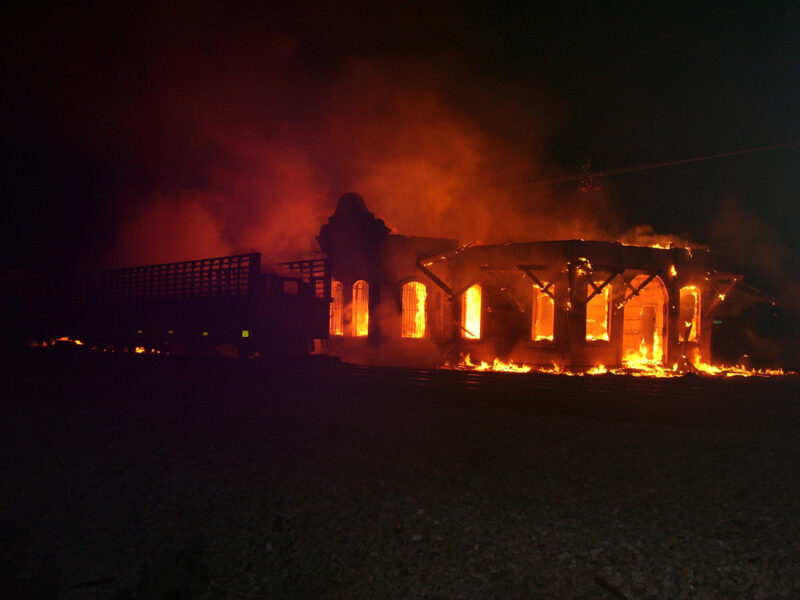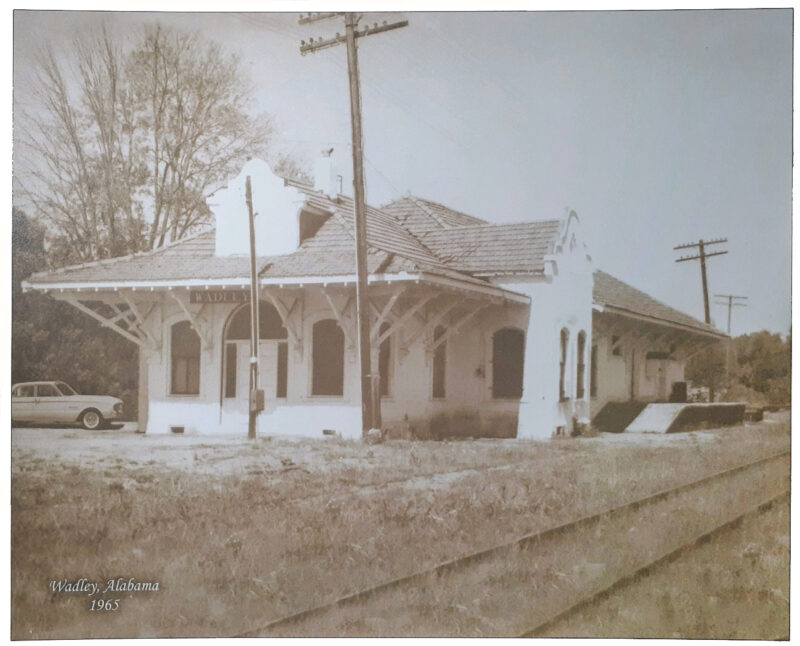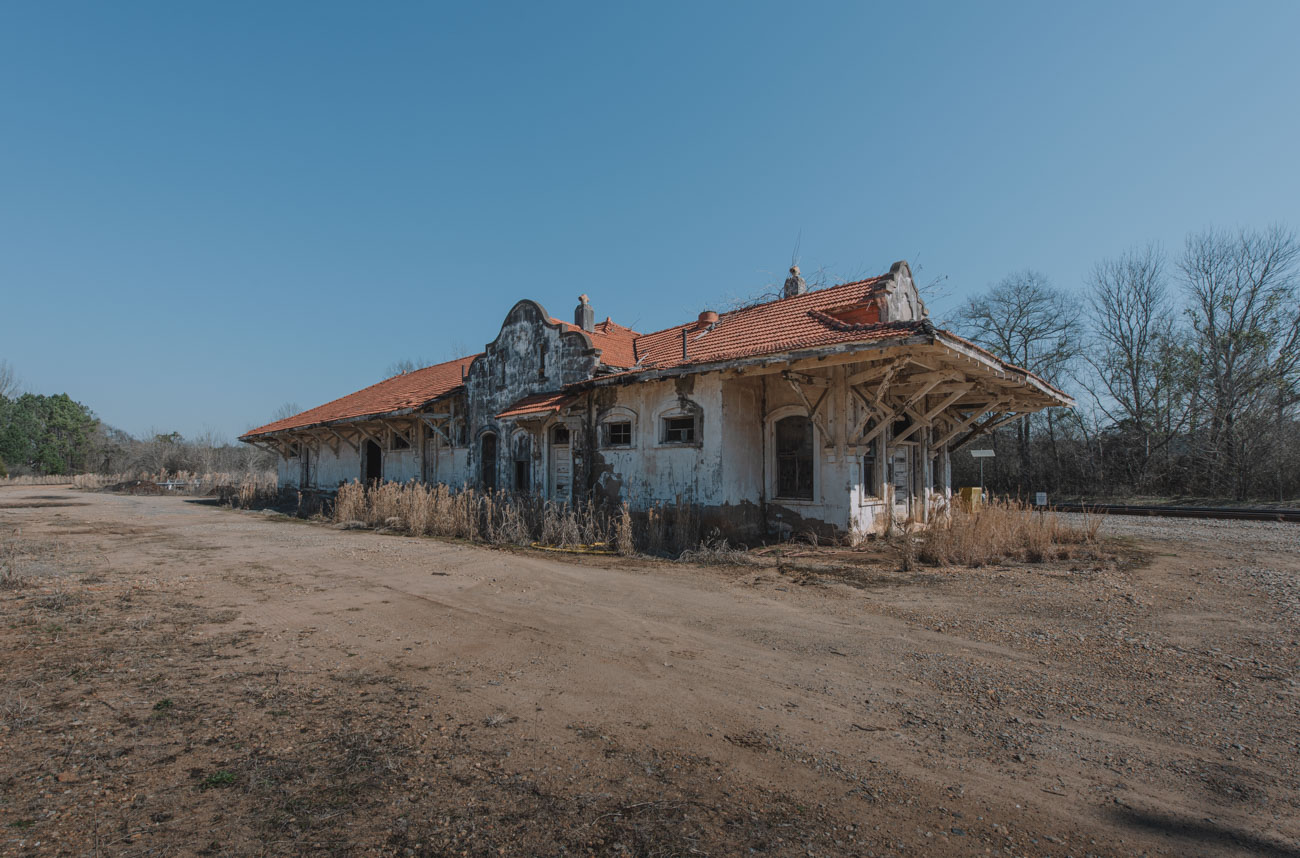| City/Town: • Wadley |
| Location Class: • Industrial |
| Built: • 1907 | Abandoned: • 1964 |
| Historic Designation: • National Register of Historic Places (2011) |
| Status: • Abandoned • Endangered |
| Photojournalist: • David Bulit |
Table of Contents
Wadley’s Founding
People began settling in the area now known as Wadley as far back as the 1830s after the creation of Randolph County on December 18, 1832, from lands acquired from the Creek Indians in the 1832 Treaty of Cusseta. The town of Wadley though wasn’t established until 1906 when the Callaway Development Company of LaGrange, Georgia, purchased the land that would later become the town of Wadley. The company owned numerous textile mills along the Chattahoochee River as well as making it a stop along the Atlanta, Birmingham, and Atlantic (AB&A) railroad line. The town was named after George Dole Wadley, General Superintendent of the AB&A Railroad .Although a mill was never built there, the town became a local agricultural trading hub.
Atlanta, Birmingham, and Atlantic Railroad
Waycross Air Line Railroad
Atlanta, Birmingham, and Atlantic Railway was originally called the Waycross Air Line Railroad which was chartered on October 24, 1887, by the Waycross Lumber Company. The company owned a sawmill in Waltertown, Georgia located about seven miles from Waycross. The railroad opened in 1890 with 25 miles of track from Waycross to Selloms, Georgia. The Stilwell, Miller and Company acquired the lumber company and expanded the railroad lines to Bolen, Georgia, and then to Nicholls, Georgia.
On August 15, 1900, work began on expanding the line to Fitzgerald, Georgia. Service to that city began on February 26, 1901, after the completion of a new passenger station with a freight station soon following. During this time, the company also announced plans to further expand the railroad in a northwestern direction toward Birmingham.
Atlantic and Birmingham Railroad
Following the announcement, the name was changed from the Waycross Air Line Railroad to the Atlantic and Birmingham Railroad on October 25, 1901, indicating the company’s plans to connect Birmingham, Alabama, with the Atlantic Ocean. Starting from Fitzgerald, new tracks were constructed to Cordele, Georgia in 1902, and then to Montezuma, Georgia the following year where the railroad met the Central of Georgia Railway.
At this point, the Atlantic and Birmingham Railroad began purchasing smaller railroads in order to extend their line to Birmingham, starting with the Tifton and Northeastern Railroad and the Tifton, Thomasville and Gulf Railway in 1903. As part of this merger, the company changed its name from the Atlantic and Birmingham Railroad to the Atlantic and Birmingham Railway. Another railroad, Brunswick and Birmingham Railroad, was purchased in 1904.
The Atlanta, Birmingham and Atlantic Railroad was formed in 1905 to specifically purchase the Atlantic and Birmingham Railway Company and extended its lines. Construction began on new lines from Montezuma to Birmingham along with a new branch towards Atlanta. The railroad to Birmingham was completed in 1908. On January 1, 1909, though, it was found that the company was not making payments on its bonds reasoning they had “no funds“.
The company went into receivership and exited receivership in 1915 as the Atlanta, Birmingham, and Atlantic Railway. Despite this, its financial problems continued and again went into receivership in 1921. It was reorganized as the Atlanta, Birmingham and Coast Railroad (ABC) in 1926 and controlled by the Atlantic Coast Line Railroad (ACL), which owned a majority of the stock. In 1946, the ACL officially purchased the ABC which became the latter company’s Western Division and operated under the ACL name.

Wadley Depot
The Wadley Depot was built in 1907 featuring a clay tile-hipped roof, with partially exposed rafter ends and large, bracketed overhangs. The south facade has an arched central opening with a double-leaf door flanked by leaded glass sidelights and topped with an arched transom. The east, track-facing, elevation has a Spanish-style frontone. The interior is divided into a passenger lobby and offices at the south end, with a waiting room and ticket office in the center, and a large cargo room at the north.
The Wadley Depot closed to passenger traffic in 1964, and the line eventually came under the control of CSX Transportation.
Shortly before the Wadley Depot was completed, an exact copy was built in the nearby city of Roanoke with the first passenger train arriving to the station on August 4, 1907. In the early morning hours on June 17, 2006, police and firefighters responded to a fire at the Roanoke Depot which had been abandoned for some time. Despite their efforts, the depot was completely destroyed. The cause of the fire was arson but it is unkonw if the fire was set intentionally or by accident.
The Wadley Depot is one of only four surviving Mission Revival train stations in Alabama. The depot was named to the Alabama Historical Commission’s Places in Peril list in 2009, which led to a community effort to preserve the building. It was listed on the National Register of Historic Places in 2011. Residents hope that the depot can be saved and turned into a library, museum, or community center. Sadly, the depot remains in a state of disrepair and would require extensive remediation work.

Photo Gallery
References
Waycross Journal-Herald. (June 19, 1975). Building of Rails Here Fascinating Story Says Pigge
Wikipedia. (retrieved June 20, 2022). Waycross Air Line Railroad
The Baltimore Sun. (January 2, 1909 p.12). RAILROAD DEFAULTS ON BONDS
David B. Schneider, Susan Enzweiler. (October 31, 2010). National Register of Historic Places Nomination Form
The Roanoke Leader. (January 22, 1908 p.2). FROM WADLEY
The Randolph Leader; Penny L. Pool. (June 20, 2006). Fire destroys historic Roanoke depot
The Macon Telegraph. (July 30, 1908 p.3). WADLEY INVESTMENT CO. GRANTED A CHAPTER











